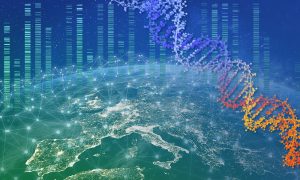
EMBL and Tara: Rome
The next stop on Tara’s journey will be the Porto Turistico in Ostia, at the mouth of the Tiber
Tara’s next stopover, from 12–14 September, will take place a few miles downriver from Rome. It will be accompanied by various events, including a scientific conference about the environment and life, named ‘On the waves of science’, and a press conference with speakers from EMBL Rome and Tara. There will also be outreach activities, such as group visits on board Tara, an opportunity to build a fluorescence microscope, and stalls with games and science-related activities.
“One of the main goals of EMBL during the stopover is to engage directly with Italian society,” says Philip Avner, Head of EMBL Rome. “The talks will be in Italian, for everyone who is interested. One of the goals we have is to open up to some of the universities in the Rome region. We want to show students what EMBL can offer them for their scientific career, be it in Rome, Heidelberg, or other EMBL sites.”
Pipetting on moving ground
One of the speakers at the scientific conference started her scientific career at EMBL Rome and also knows life on Tara very well. Bianca Silva from the École Polytechnique Fédérale de Lausanne (EPFL) was both a PhD student at EMBL Rome and part of Tara’s scientific crew for six weeks in 2011, during the Tara Oceans expedition.
During her PhD, Silva worked in the group of Cornelius Gross, researching the neuronal mechanisms that mediate fear. It was at this time that she heard about the Tara Oceans expedition. Being both a sailor and a scientist, Silva was very attracted to the idea of a sailboat going around the world to do research. It was a coincidence that finally brought her on board: during a visit by Gross to EMBL Heidelberg, a scientist who was meant to travel with Tara on the leg between San Diego and Panama broke a foot and was unable to go. “Cornelius was asked if he knew someone who could go instead,” says Silva. “He asked me and I said yes in a second.”
The six weeks Silva spent on Tara took her to a completely different area of biology: sampling plankton. Silva would help wherever she was needed, making use of her relatively unusual skill set: most scientists on board did not have much experience with sea voyages, and had difficulties with standing and walking on a moving floor. “I’m good at pipetting, because I’m a scientist, and I’m also good at standing on a boat, because I’m a sailor, says Silva, “so I could step in for the scientists who were seasick or having difficulties.”
After finishing her PhD, Silva acquired a sailboat of her own and continued to work on a combination of sailing and research. This time, she was in contact with French information scientist Hervé Glotin, a specialist in bioacoustics who was recording underwater sounds across the Mediterranean. He managed to sample the coasts, but was missing many Mediterranean islands. He gave Silva a hydrophone and she collected the data he needed during a six-month voyage.
The human brain and its environment
While Tara is sampling microplastics around the European coastline during its current mission, much of the science done by EMBL Rome is focused on neurobiology. Avner explains that although the activities of Tara and EMBL Rome are not connected at first sight, environmental research has increasingly gained importance in other scientific fields, including neurobiology. “We’re obviously not involved directly in ocean research,” says Avner. “But in our work, we are very involved in looking at the relationship between brain activity and the environment. This interface between our environment and how we interact as social beings is a part of our portfolio that we want to highlight together with Tara.”
Understanding the environment is of crucial importance to better understand the brain: the most complicated biological human system, says Avner.
Neurological diseases have been increasing, something that can’t be explained just by the rising age of the human population. In neurobiological research, there are strong indications that diseases such as Alzheimer’s, Parkinson’s, and autism are not only caused by our genetic makeup, but also by environmental components that could act as a conditioner or trigger. “One way we imagine the environment affecting neurological functions is through epigenetics,” says Avner. “To understand the environmental effects on our brain is not only of great importance in terms of human health, but also in terms of general biological understanding.”
Joint events and the connection of seemingly very different fields, such as the work of EMBL Rome and Tara, will be very helpful in gaining a vaster and more detailed image of the world.


